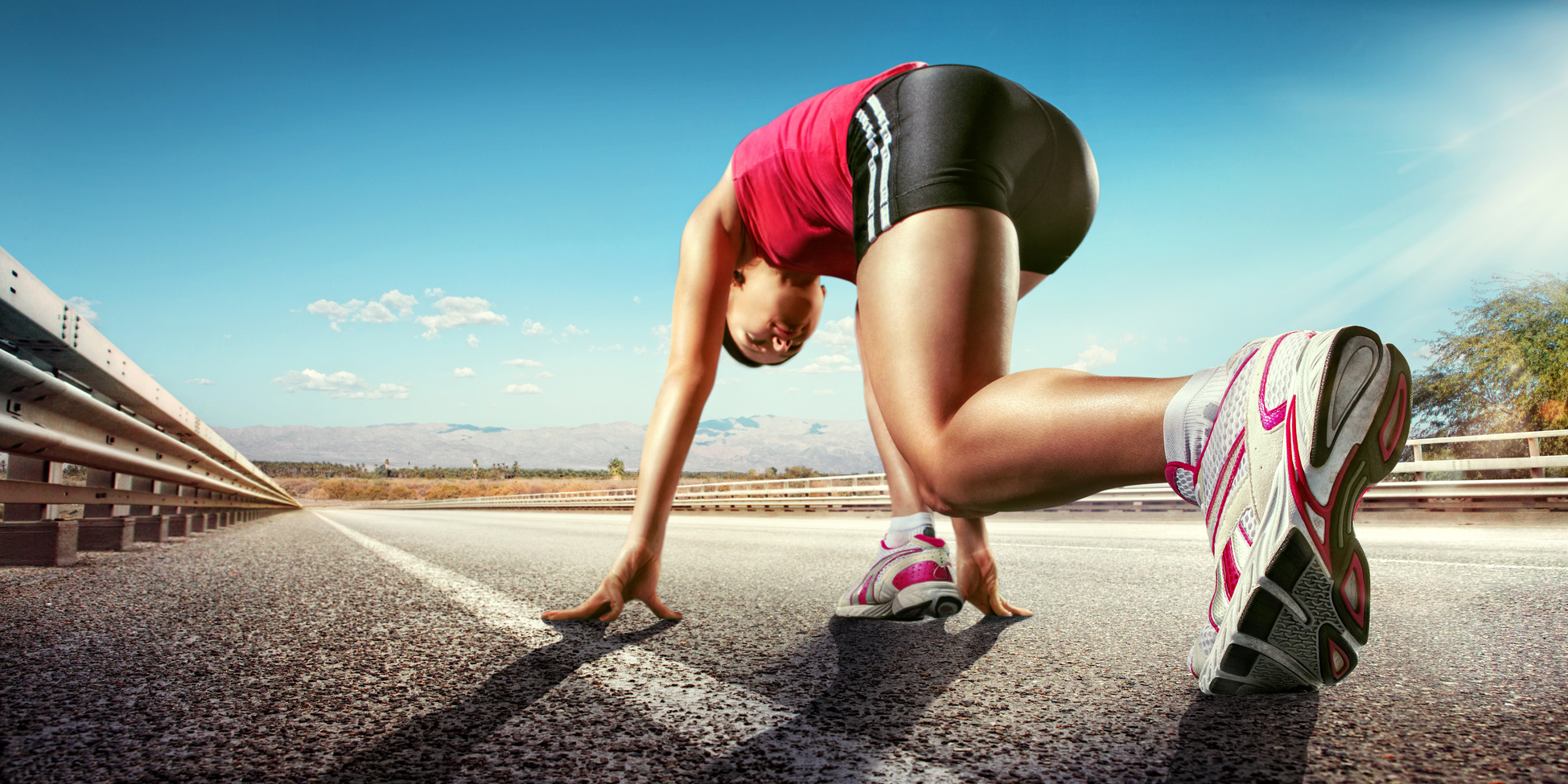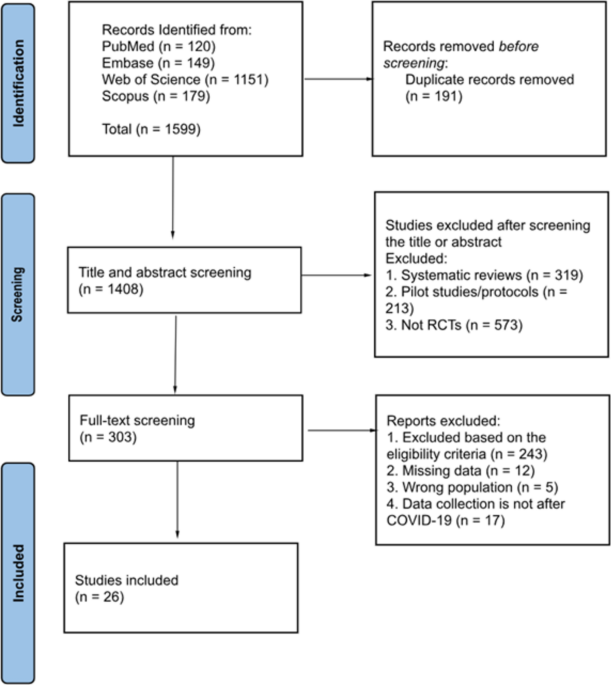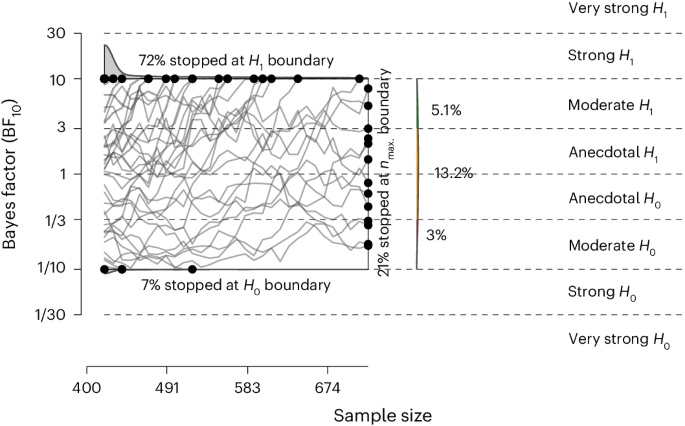Discover Pandipedia
Pandipedia is the world's first encyclopaedia of machine generated content approved by humans. You can contribute by simply searching and clicking/tapping on "Add To Pandipedia" in the answer you like. Learn More
Expand the world's knowledge as you search and help others. Go you!

Securing funding is a critical milestone for any startup, especially in an increasingly competitive landscape. There are various strategies that entrepreneurs can employ to attract investors and obtain the necessary capital to realize their business visions. This report outlines these strategies based on industry insights and expert recommendations.
Understand Your Funding Needs
Before seeking funding, startups must clearly understand their financial requirements. Preparing a detailed financial plan that accounts for all business expenses, such as product development, marketing, hiring, and operational costs, is essential. Startups should determine the amount they need and how they plan to use it effectively. Knowing what constitutes a comfortable 'runway'—the period the funding needs to last—can enhance the startup's appeal to potential investors, as it reflects careful planning[3][6].
Build a Compelling Business Plan

A well-crafted business plan is vital for attracting investors. This document should communicate the startup's mission, market analysis, growth strategies, and financial projections. An effective business plan serves not only as a roadmap but as a persuasive tool that highlights the startup's unique selling points and growth potential[4][9]. Investors look for clarity about market opportunities and measurable outcomes, so it’s crucial to articulate these clearly.
Develop Product-Market Fit
Proving product-market fit is often a key factor in securing funding. Founders should demonstrate that their product meets a genuine market need and has traction within their target demographic. Metrics like user engagement, preliminary sales, or successful pilot programs can effectively convince investors of the viability of the startup[6][7].
Leverage Networking Opportunities

Networking plays a significant role in attracting investment. Entrepreneurs should attend industry events, conferences, and meetups to connect with potential investors. Engaging in discussions within professional networks or platforms like LinkedIn can create opportunities for investment discussions and introductions to influential figures in the startup ecosystem[8][9]. Building relationships with investors before approaching them for funding can enhance trust and alignment.
Craft a Strong Pitch
When it comes time to present to investors, a polished pitch is essential. Entrepreneurs should practice their presentations to clearly convey their startup's vision, market opportunity, competitive advantage, and financial projections. Utilizing storytelling techniques can make pitches more engaging and memorable, while visuals like charts and graphs can simplify complex data[6][8]. Establishing a compelling narrative helps capture investor interest and sustain their attention.
Explore Various Funding Sources
Startups today have access to numerous funding sources beyond traditional venture capital. Some of the alternative methods include:
Angel Investors: Wealthy individuals willing to invest in promising startups in exchange for equity or convertible debt.
Crowdfunding: Utilizing platforms like Kickstarter or Indiegogo to gather small contributions from a large audience, effectively validating the business idea in the process[3][9].
Government Grants: Some governments offer financial assistance to startups, which can be beneficial and less burdensome than loans[3][5].
Incubators and Accelerators: These programs can provide resources, mentorship, and sometimes funding in exchange for equity[4][6].
Each of these options comes with its pros and cons; hence, startups should carefully consider which aligns best with their business model and funding needs.
Use Agile Funding Approaches
Recent trends indicate a shift toward more flexible fundraising strategies that enable startups to raise capital quickly and without the formalities associated with traditional rounds. Tools like SeedFAST and SeedNOTE allow startups to engage investors for future equity or convertible loans, providing liquidity without committing to defined valuations up front[3]. These agile funding methods can be particularly advantageous for startups in need of fast capital or looking to extend their operational runway.
Create Competitive Tension
Attracting multiple interested investors can create a competitive environment that may lead to more favorable terms. When investors know others are interested, they may improve their offers to secure a deal. This competitive tension not only can result in better financial terms but also allows entrepreneurs to choose investors who are the best fit for their business[1][2].
Engage in Continuous Communication with Investors
Once funding is secured, maintaining a good relationship with investors is crucial. Regular updates regarding business progress, achievements, and challenges foster trust and keep investors engaged for future funding rounds. Certainly, transparent communication helps build a network of supporters who may provide valuable advice and additional funding later[4][7].
Conclusion
Securing funding is a complex yet manageable challenge for startups. By understanding their needs, preparing solid business plans, demonstrating market fit, engaging in network outreach, crafting compelling pitches, and exploring diverse funding sources, entrepreneurs can significantly enhance their chances of obtaining the capital required to launch and grow their ventures. Keeping investors informed through continuous communication will not only build trust but also pave the way for future opportunities in the funding landscape.
Let's look at alternatives:
- Modify the query.
- Start a new thread.
- Remove sources (if manually added).
- Request a manual search from our human research team.

Aspects HummZinger HighView Hanging Hummingbird Feeder
Known for its simple design and easy cleaning features, this feeder has a built-in perch where birds can rest while feeding[3][4].
:max_bytes(150000):strip_icc()/perky-pet-pinchwaist-hummingbird-feeder-87b8bca2c06944398771fe7e1f206b36.jpg)
Perky-Pet Pinchwaist Hummingbird Feeder
This beautifully designed glass feeder has bee guards and an ant moat, making it effective for attracting hummingbirds without the interference of pests[4][6].

First Nature Hummingbird Feeder
An affordable option that is user-friendly, offering ten feeding ports. This feeder is easy to fill and clean, making it a great choice for beginners[3][4][5].
:max_bytes(150000):strip_icc()/more-birds-vintage-hummingbird-feeder-d95f711f54d949dea6d60f1ba0825a37.jpg)
More Birds Vintage Hummingbird Feeder
Offers both style and functionality, with a 20-ounce capacity and various color options, it combines vintage aesthetics with modern utility[3][4].
:strip_icc()/Netvue-Birdfy-Hummingbird-Feeder-with-Camera-ffa2d0b883b9435b9ceda98d1633c011.jpg)
Netvue Birdfy Hummingbird Feeder with Camera
This innovative feeder not only dispenses nectar but also features a built-in camera, allowing you to capture close-up moments of hummingbirds in action[3][7].
Grateful Gnome Gnome Hummingbird Feeder
A colorful and vibrant option that is sure to catch the attention of hummingbirds and enhance the beauty of your garden[6][8].
Oasis Hummingbird Feeder
This dish feeder is easy to clean and refill, making it a convenient choice for busy gardeners looking to attract birds without hassle[2][8].
:max_bytes(150000):strip_icc()/sewanta-plastic-hummingbird-feeder-73c348cc7465427ba7fc7f6fbf057c10.jpg)
Sewanta Plastic Hummingbird Feeder
A lightweight and budget-friendly option, this feeder is designed for easy cleaning and features a built-in ant guard[4][6].
:max_bytes(150000):strip_icc()/lujii-blown-glass-hummingbird-feeder-037fd98f0ac34d4cb6597e068181b8a6.jpg)
LUJII Blown Glass Hummingbird Feeder
Hand-blown with an attractive design, this feeder holds up to 25 ounces of nectar and includes features to deter insects[6][8].
:max_bytes(150000):strip_icc()/perky-pet-elegant-glass-copper-hummingbird-feeder-3c73fce674b949cd8f60abb610b3162a.jpg)
Perky-Pet Elegant Copper Hummingbird Feeder
This stylish metal feeder is both functional and decorative, providing four feeding ports for multiple birds[4][6].
:strip_icc()/Prasacco-Hand-Held-Hummingbird-Feeder-3bb0be6a250d4a1fabe0bc8fec37475e.jpg)
Prasacco Hand Held Hummingbird Feeder
A unique way to interact with hummingbirds, this handheld feeder allows for close-up feeding experiences[3][4].
:strip_icc()/Sweet-Feeders-Geometric-Window-Hummingbird-Feeder-d6f43d6dc24e4b9d807b4b9d0b73a4f3.jpg)
Sweet Feeders Window Hummingbird Feeder
Ideal for those wanting to observe birds closely from indoors. This feeder is easy to clean and refill, attaching securely to windows[3][4].

Nature’s Way Antique Glass Gravity Hummingbird Feeder
This beautifully designed feeder holds 28 ounces of nectar and includes several feeding ports and an ant moat[4][6].
HummZinger Hummingbird Feeder by First Nature
This feeder is well-reviewed for its ease of use and efficient nectar dispensing system, making it a smart choice[1][2].
Birds Choice Hummingbird Feeder
With a generous 32-ounce capacity, this feeder is perfect for busy areas with many hummingbirds[3].
Joyful Bird Retro Flower Hummingbird Feeder
A stylish and artistic option that serves both as decor and a functional bird feeder[6].
:strip_icc()/More-Birds-Big-Gulp-Hummingbird-Feeder-840bf90a56da42c9b99619c5e6721059.jpg)
More Birds Big Gulp Hummingbird Feeder
Designed for larger flocks, this feeder features a 40-ounce capacity and multiple feeding ports, minimizing the need for frequent refills[3][4].
:strip_icc()/Sweet-Feeders-Geometric-Window-Hummingbird-Feeder-d6f43d6dc24e4b9d807b4b9d0b73a4f3.jpg)
Sweet Feeders Geometric Window Hummingbird Feeder
Another excellent window option, this feeder is stylish and functional, with easy installation[3][6].
:strip_icc()/Zummr-Hummingbird-Ring-Feeder-4825c77d07d248fab662cbf74062538b.jpg)
Zummr Hummingbird Ring Feeder
This quirky feeding ring allows you to attract hummingbirds while keeping both hands free, offering a unique experience[7][8].

Perky-Pet Mason Jar Hummingbird Feeder
While functional, this feeder adds a touch of rustic charm to any garden with its classic mason jar design[6][8].

Nature Anywhere Hummingbird Feeder
Features a larger capacity and is built for durability, making it ideal for active backyards[3][6].
Let's look at alternatives:
- Modify the query.
- Start a new thread.
- Remove sources (if manually added).
- Request a manual search from our human research team.
Get more accurate answers with Super Search, upload files, personalised discovery feed, save searches and contribute to the PandiPedia.

Kindle Paperwhite (2024)
Offers a 7-inch, 300 PPI display, waterproof design, warm light adjustment, and is ideal for most readers for its balance of features and price[2][9].
Kindle (2022)
The most affordable option with a 6-inch, 300 PPI screen, offering a compact and lightweight design, USB-C charging, and decent front lighting, but lacks waterproofing[6][9].

Kindle Scribe
A 10.2-inch e-reader with stylus support for note-taking, designed for users who want both reading and writing capabilities[2][9].
Kindle Kids Edition
Features a 6-inch display, comes with a protective case, a one-year subscription to Amazon Kids+, and is tailored for children[10].

Kindle Paperwhite Signature Edition
Premium version of the Paperwhite with 32 GB storage, wireless charging, and automatic light adjustment[9].

Kindle Colorsoft
Amazon's first color e-reader with a 7-inch display designed for a vibrant reading experience with comics and graphic novels[4][9].
Kindle Oasis
Features an asymmetrical design with page-turn buttons, a 7-inch display, and automatic brightness adjustments, though it has been phased out of Amazon's offerings[5][9].
Kindle Kids Edition Paperwhite
Similar to the standard Paperwhite but designed specifically for children, offering educational tools and a protective case[2][6].
Kindle Paperwhite Signature Edition (2022)
Ideal for avid readers who want more storage and features like wireless charging and light sensitivity[8][9].
Let's look at alternatives:
- Modify the query.
- Start a new thread.
- Remove sources (if manually added).
- Request a manual search from our human research team.

Climate plays a crucial role in athletic performance, impacting various physiological and psychological parameters. This report examines how temperature, humidity, and other climate factors can enhance or hinder athletic abilities based on recent findings.
Temperature Effects on Performance

Running performance, particularly in endurance sports, can be significantly affected by temperature. Studies indicate that both hot and cold environments present unique challenges to athletes. For example, cold temperatures can impair aerobic performance, with some research suggesting a decline of up to 5% in performance at -20 degrees Celsius[1]. Conversely, higher temperatures also exert detrimental effects. Heat stress can cause an increase in core body temperature, leading to decreased muscle endurance and shifting energy production from aerobic to anaerobic mechanisms, which utilizes energy stores more rapidly[6].
During exercise in hot environments, the body competes for limited blood flow between muscle demands and heat dissipation. In a study of marathon runners, increases in temperature from 10°C to 25°C were associated with decreases in performance time, emphasizing the significant impact that temperature has on race outcomes[4]. This correlation highlights the intricate balance athletes must maintain between performance intensity and environmental conditions.
The Role of Humidity

Humidity compounds the effects of temperature on sports performance. High humidity levels can drastically decrease the efficacy of sweat evaporation, a critical mechanism for thermoregulation. For instance, hot and humid conditions can lead to sweating that pools on the skin rather than evaporating, impairing heat loss and making exercise feel more strenuous[3]. This phenomenon explains why athletes find training in humid conditions more challenging than in hot, dry environments.
In controlled experiments, elevated humidity not only heightened core temperatures but also led to a reduction in time-trial performance by approximately 3.4%[5]. Furthermore, athletes can lose 2% to 8% of their body weight through sweating during high-intensity exercise without adequate fluid replacement, leading to dehydration and impaired exercise efficiency[6]. Proper hydration strategies are therefore crucial for athletes, particularly in hot and humid climates.
Acclimatization and Its Benefits
Acclimatization is a vital process for athletes preparing to compete in extreme climates. It involves gradually exposing the body to heightened temperatures and humidity over a period of 7-14 days. This prepares the cardiovascular system and improves sweat rates, blood volume, and metabolic responses[6]. Research has shown that even short-term exposure can yield about 70% of the adaptations needed to cope effectively in high-heat environments[3].
Training under specific conditions similar to competition climates allows athletes to enhance their heat tolerance and performance. However, athletes must monitor their intensity to avoid overheating and ensure hydration to maintain performance levels[4][6].
Cardiovascular and Physiological Responses

Climate-related stresses also affect cardiovascular function. Both high temperatures and humidity can lead to increased heart rates during exercise, indicating a higher level of exertion than might be experienced in cooler conditions. This is mainly due to the body’s need to redirect blood flow to the skin to dissipate heat, which in turn limits the blood accessible to working muscles[4][5]. As temperatures surpass certain thresholds, such as 25°C, athletes experience elevating heart rates and perceived exertion even at lower intensity levels, confirming the adverse effects of heat on performance[4].
Optimal Conditions for Performance

For endurance events like marathons, moderate temperatures often yield the best performance outcomes. Studies suggest that the optimum temperature range for marathon running is between 7.5°C and 15°C[2]. Conditions outside this range can significantly impair athletes' speed and efficiency. The interplay of air temperature, humidity, and wind speed determines the overall impact on performance; environments that facilitate better evaporative cooling can enhance endurance capabilities[1][2].
Conclusion
The interplay of climate conditions—including temperature, humidity, and acclimatization strategies—significantly impacts sports performance. Athletes and coaches must carefully consider these environmental factors when planning training and competitions to optimize performance and reduce health risks associated with extreme climates. Employing effective hydration strategies and allowing adequate time for acclimatization can bolster athletes' resilience to climate extremes, ultimately enhancing their competitive edge in diverse environmental conditions.
Let's look at alternatives:
- Modify the query.
- Start a new thread.
- Remove sources (if manually added).
- Request a manual search from our human research team.
Introduction to mR2AG
In the ever-evolving field of Artificial Intelligence, particularly in multimodal understanding, the challenge of effectively integrating visual and textual knowledge has gained significant attention. Traditional Multimodal Large Language Models (MLLMs) like GPT-4 have shown prowess in visual question answering (VQA) tasks; however, they often falter when confronted with Knowledge-based VQA tasks, such as INFOSEEK and Encyclopedic-VQA. These tasks require the models to provide specific and accurate answers based on external information rather than relying solely on their pre-existing knowledge base.
To address these limitations, the mR2AG framework—short for Multimodal Retrieval-Reflection-Augmented Generation—has been developed. This innovative approach combines retrieval mechanisms with reflective processes to enhance the performance of MLLMs in answering knowledge-based questions accurately and efficiently.
Overview of mR2AG
mR2AG introduces two critical reflection operations: Retrieval-Reflection and Relevance-Reflection. Retrieval-Reflection determines whether the user query is Knowledge-based or Visual-dependent, thereby deciding the necessity of information retrieval. This adaptive retrieval process helps avoid the unnecessary complexity of retrieving information when it’s not needed, ultimately streamlining the question-answering process.
The second reflection operation, Relevance-Reflection, plays a crucial role in identifying specific pieces of evidence from the retrieved content that are beneficial for answering the query. This allows the MLLM to generate answers rooted in accurate and relevant information rather than vague generalities, which is often a problem with current models.

As described in the paper, mR2AG “achieves adaptive retrieval and useful information localization to enable answers through two easy-to-implement reflection operations, preventing high model complexity”[1]. This efficiency is vital for maintaining the MLLMs' original performance across a variety of tasks, especially in Visual-dependent scenarios.
Performance and Results
The mR2AG framework has demonstrated significant improvements over prior models in handling knowledge-based queries. Comprehensive evaluations on datasets such as INFOSEEK reveal that mR2AG outperforms existing MLLMs by notable margins. Specifically, when using LLaVA-v1.5-7B as the basis for MLLM, applying mR2AG leads to performance gains of 10.6% and 15.5% on the INFOSEEK Human and Wikidata test sets, respectively, while also excelling in the Encycopedic-VQA challenge[1].

One of the compelling aspects of mR2AG is its ability to refine its outputs based on the relevance of retrieved information. The results indicate that by effectively evaluating retrieval content, mR2AG can identify and utilize evidence passages, resulting in more reliable answer generation. “Our method can effectively utilize noisy retrieval content, accurately pinpoint the relevant information, and extract the knowledge needed to answer the questions”[1].
Moreover, mR2AG does not merely improve knowledge-based questioning; it preserves the foundational capabilities of the underlying MLLMs to handle Visual-dependent tasks with similar finesse. This balance between specialized retrieval and generalizeable knowledge is a hallmark of mR2AG's design.
Methodology
The success of mR2AG hinges on its structured methodology. Initially, user queries are classified by type—either Visual-dependent or Knowledge-based. The MLLM generates retrieval-reflection predictions to decide whether external knowledge is necessary. If the model predicts that retrieval is required, it selects relevant articles from a knowledge base, focusing on Wikipedia entries, which are rich in information[1].

Once the relevant documents are retrieved, the model employs Relevance-Reflection to assess each passage's potential as evidence for the query. Each passage undergoes evaluation to determine its relevance, allowing the model to generate answers based on identified supportive content. This layered approach—first distinguishing the need for external information, then pinpointing the most pertinent evidence—significantly enhances the accuracy of responses.
The mR2AG framework also introduces an instruction tuning dataset (mR2AG-IT) specifically designed for Knowledge-based VQA tasks, which aids in the model's adaptability through a structured training process[1].
Conclusion
The mR2AG framework represents a significant advancement in the domain of knowledge-based visual question answering within AI. By integrating adaptive retrieval with precise evidence identification, mR2AG not only enhances the accuracy of answers but also streamlines the complexity typically associated with multimodal models. Its robust performance across various benchmarks demonstrates its effectiveness in tackling challenging knowledge-centric tasks while maintaining the versatility required for visual understanding.

As the AI landscape continues to evolve, frameworks like mR2AG underline the potential for models that can both comprehend intricate visual data and harness external knowledge bases efficiently, setting a foundation for future advancements in multimodal AI systems.
Let's look at alternatives:
- Modify the query.
- Start a new thread.
- Remove sources (if manually added).
- Request a manual search from our human research team.

The 'invention of the argand burner in the latter part of the last century enabled avery remarkable improvement in lighthouse illumination to be introduced'[1].
Let's look at alternatives:
- Modify the query.
- Start a new thread.
- Remove sources (if manually added).
- Request a manual search from our human research team.
Get more accurate answers with Super Search, upload files, personalised discovery feed, save searches and contribute to the PandiPedia.
Defining Dieselpunk Art
Dieselpunk is a retrofuturistic subgenre that combines the aesthetics of diesel-based technology from the interwar period through the 1950s with retro-futuristic technology and postmodern sensibilities[2]. It is a style that embraces the styles and technologies of the era, rejoicing in a prolonged Jazz Age ambiance characterized by great enthusiasm and hopes about the future[2]. As an artistic style, dieselpunk roots itself in the aesthetics and technological sophistication of the past, generally drawing inspiration from the 1920s to the 1950s, influenced primarily by the United States and Europe[4].
Influences and Inspirations
The artwork is heavily influenced by art movements prevalent in Western culture during the diesel era[2]. Key influences include Art Deco, Film Noir, pulp magazines, and commercial and industrial imagery[6]. It also borrows from various art styles, including Streamline Moderne, and World War II art and propaganda[4]. This encompasses traditional tropes and genres like pulp adventure, film noir and weird horror, blended with a contemporary aesthetic[2]. Tome Wilson noted that artists were creating a future fueled by the spirit of the Jazz Age[2].
Key Characteristics of Dieselpunk Visuals
Dieselpunk art often showcases bizarre machines full of esoteric levers and cracked-glass meters, visually intense and pretty sinister-looking when photographed[2]. The style often includes dark, muted colors and an overall gritty, atmospheric feel, reminiscent of noir films and vintage science fiction illustrations[3]. It emphasizes robust diesel engines, metallic surfaces, and a sense of rugged functionality[8]. Common elements include streamlined curves, gleaming chrome, and often follows suit the luxury cars[4]. According to Iolanda Ramos, 'noir ambience' is an element of dieselpunk[2].
Themes and Styles Within Dieselpunk
Dieselpunk can be divided into two primary themes: Ottensian and Piecraftian[2]. 'Piecraftian' focuses on the aesthetics of the world wars and speculates on how human culture could theoretically cease to evolve due to constant warfare[2]. This theme continues the aesthetics of the diesel era into later periods by describing a world where survival is placed above aesthetical evolution[2]. 'Ottensian' focuses on a setting where the decadent aesthetics and utopian philosophies of the American Roaring Twenties continued to evolve unhindered by war or economic collapse[2]. Ottensian dieselpunk fiction is primarily concerned with a positive vision of technology and incorporates 'an enthusiasm for the predictions about the future'[2].
Notable Artists and Artworks
Several artists have contributed significantly to the dieselpunk movement. Shunya Yamashita's work, I Can't Explain, is considered a definitive example of dieselpunk art[2]. Kow Yokoyama is another prominent artist known for his Maschinen Krieger figurine series[2]. Other notable artists include Alexey Lipatov, Stefan Prohaczka, Keith Thompson, Rob Schwager, and Sam Van Olffen[2]. In Russia, Waldemar Kazak, known for dystopian dieselpunk art, is appreciated by the dieselpunk community[7].
Examples in Media
Dieselpunk aesthetics have been applied in numerous media. Fritz Lang's Metropolis (1927) exemplifies the genre’s style and technology with large factories and pumping machinery, emphasized by German Expressionism[1]. Sky Captain and the World of Tomorrow showcases aerial dogfights amidst towering cityscapes[8]. The BioShock games are set in an alternate Earth in which fantastical cities exist in the sky and underwater utilizing Art Deco and Streamline Moderne styles[4]. The film The Rocketeer takes the popular Art Deco style as inspiration for character, vehicle, and set design[4].
Online Communities and Resources
The internet has played an important role in the development of dieselpunk[2]. Prominent online communities include Dieselpunks and Never Was Lounge[2]. Online magazines dedicated to the genre include Dieselpunk Encyclopedia, Dizelpanki, The Flying Fortress, Never Was and Vintage Future[2]. DeviantArt is known as a mixed bag of different art styles with detailed digital drawings[5]. ArtStation is a top-notch and very professional site in the digital art world[5].
The Maker Spirit
Connecting today's technology with yesterday's aesthetic requires a do-it-yourself attitude, with many people interested in the dieselpunk movement are artists of one kind or another[4]. To build a good dieselpunk project, learning about the military, architectural, and artistic styles prevalent during the 1920s to 1950s is key to designing a compelling piece of dieselpunk art[4]. Dieselpunk costumes tend to be less reliant on gadgets and gizmos than those you'll find in the steampunk movement[4].
Let's look at alternatives:
- Modify the query.
- Start a new thread.
- Remove sources (if manually added).
- Request a manual search from our human research team.

Meditation is a widely practiced technique known for its numerous benefits on mental health and emotional well-being. A wealth of scientific research supports its role in reducing stress, anxiety, and depression, enhancing cognitive functions, and promoting a greater sense of overall well-being.
Stress Reduction and Emotional Regulation

One of the most significant psychological effects of meditation is its ability to reduce stress. Research shows that mindfulness practices can drastically lower levels of perceived stress by activating the body's relaxation response, which decreases cortisol production—a hormone associated with stress[4][10]. Regular meditation can help manage stress, allowing individuals to approach challenging situations more calmly. For instance, a systematic review concluded that mindfulness meditation programs significantly improved symptoms of anxiety and depression[6].
Furthermore, meditation has been linked to improved emotional regulation. Individuals who regularly practice mindfulness meditation report increased abilities to manage their emotional responses to stressful situations. This enhanced emotional resilience can lead to a more positive outlook on life and improved interpersonal relationships[2][9]. By fostering a non-judgmental awareness of thoughts and feelings, meditation helps practitioners observe their emotional states without becoming overwhelmed by them, promoting healthier responses to both positive and negative emotions[1][8].
Reducing Anxiety and Symptoms of Depression

Meditation has proven so effective in addressing anxiety that numerous studies advocate its use in therapeutic settings as a complementary treatment for anxiety disorders. In particular, mindfulness-based cognitive therapy (MBCT) has shown to be as effective as traditional antidepressants in preventing relapse in individuals with recurrent depression[9]. The ability of meditation to enhance self-awareness allows individuals to recognize and detach from negative thought patterns—crucial for effective anxiety management[10].
Furthermore, a systematic review analyzing mindfulness meditation’s effects during the COVID-19 pandemic revealed significant reductions in depressive symptoms among participants engaging in meditation practices[3]. Mindfulness training not only alleviates immediate feelings of sadness and anxiety but also contributes to long-term mental health by reducing rumination—excessive focus on distressing thoughts and feelings[1].
Cognitive Enhancements

Beyond emotional benefits, meditation is also associated with various cognitive improvements. Studies have demonstrated that meditation can enhance attention and concentration, making it easier for practitioners to focus on tasks at hand[6]. Techniques such as focused-attention meditation are effective in strengthening cognitive skills, as they train individuals to resist distractions and maintain mental clarity[9].
Additionally, research indicates that mindfulness practices can improve memory. Long-term meditators frequently exhibit increased gray matter density in brain regions associated with learning, memory, and emotional regulation, suggesting that regular practice can contribute to cognitive health and resilience against age-related cognitive decline[5][8] .
Physiological Benefits and their Psychological Impact

The psychological effects of meditation extend to physical health as well. Evidence suggests that meditation can enhance immune function, reduce blood pressure, and decrease inflammation, which indirectly supports mental health by mitigating the physical effects of chronic stress[4]. For example, studies have shown significant impacts on inflammatory markers and greater cardiovascular functioning among regular meditators, which can foster feelings of physical well-being and reduce anxiety about health[9][5].
Such physiological improvements bolster the psychological benefits of meditation, creating a positive feedback loop. Feeling physically better may contribute to enhanced mood and a greater capacity to engage in social and personal activities, thereby enriching overall quality of life[8][9].
Techniques and Accessibility

There are various forms of meditation, each targeting different aspects of mental health. Mindfulness meditation encourages a present-focused awareness, while techniques like loving-kindness meditation foster compassion and empathy[10][5]. Research suggests that even brief, self-administered mindfulness exercises can effectively reduce stress, enhance pleasure, and improve emotional states[7].
The accessibility of meditation through diverse formats—such as online courses and smartphone apps—has further facilitated its adoption. Users can engage in mindfulness at their convenience, ensuring that they can maintain their practice without significant time constraints[9][10].
Conclusion
In summary, meditation offers extensive psychological benefits, including stress reduction, emotional balance, enhanced cognitive functions, and improved physical health. Supported by scientific evidence, mindfulness practices continue to emerge as effective, accessible means of promoting mental well-being in various populations. Regular meditation can help cultivate a more resilient mindset, fostering personal growth and enhancing overall quality of life in an increasingly stressful world.
Let's look at alternatives:
- Modify the query.
- Start a new thread.
- Remove sources (if manually added).
- Request a manual search from our human research team.
Let's look at alternatives:
- Modify the query.
- Start a new thread.
- Remove sources (if manually added).
- Request a manual search from our human research team.

To organize the world's information, and make it universally accessible and useful.
Sundar Pichai[1]
Google's goal is to satisfy your information need.
Dr. Gomes[2]

Search is far from a solved problem.
Dr. Gomes[4]
I wanted to help as many people get access to the information they wanted.
Mr. Lehman[6]
The objective of the search ads quality team is to show delightful ads to our users that satisfy their user needs.
Jerry Dischler[5]
Let's look at alternatives:
- Modify the query.
- Start a new thread.
- Remove sources (if manually added).
- Request a manual search from our human research team.




























![12 Artists Showcase "DieselPunk" 3D Art [Article + Images] – KitBash3D 12 Artists Showcase "DieselPunk" 3D Art [Article + Images] – KitBash3D](https://app.dropinblog.com/uploaded/blogs/34244460/files/DieselPunk_3D_Assets_Kit_by_Max_Bedulenko.jpg)
